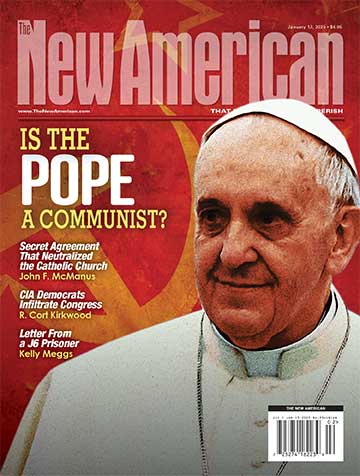According to the U.S. Department of Health and Human Services, the 2009 poverty guideline was $22,000 for an urban four-person family. In 2009, having income less than that, 15 percent or 40 million Americans were classified as poor, but there’s something unique about those “poor” people not seen anywhere else in the world. Robert Rector, researcher at the Heritage Foundation, presents data collected from several government sources in a report titled “How Poor Are America’s Poor? Examining the ‘Plague’ of Poverty in America” (8/27/2007):
• Forty-three percent of all poor households actually own their own homes. The average home owned by persons classified as poor by the Census Bureau is a three-bedroom house with one-and-a-half baths, a garage and a porch or patio.
• Eighty percent of poor households have air conditioning. By contrast, in 1970, only 36 percent of the entire U.S. population enjoyed air conditioning.
• Only 6 percent of poor households are overcrowded; two-thirds have more than two rooms per person.
• The typical poor American has more living space than the average individual living in Paris, London, Vienna, Athens and other cities throughout Europe. (These comparisons are to the average citizens in foreign countries, not to those classified as poor.)
• Nearly three-quarters of poor households own a car; 31 percent own two or more cars.
• Ninety-seven percent of poor households have a color television; over half own two or more color televisions.
• Seventy-eight percent have a VCR or DVD player; 62 percent have cable or satellite TV reception.
• Eighty-nine percent own microwave ovens, more than half have a stereo, and a more than a third have an automatic dishwasher.
What’s defined as poverty is misleading in another way. Official poverty measures count just family’s cash income. It ignores additional sources of support such as the earned-income tax credit, which is a cash rebate to low-income workers; it ignores Medicaid, housing allowances, food stamps and other federal and local government subsidies to the poor. According to a report by American Enterprise Institute scholar Nicholas Eberstadt, titled “Poor Statistics,” “In 2006, according to the annual Bureau of Labor Statistics Consumer Expenditure Survey, reported purchases by the poorest fifth of American households were more than twice as high as reported incomes.” That additional money might represent earnings from unreported employment, illegal activities and unreported financial assistance. A proper measure of well-being is what a person consumes rather than his income. A huge gap has emerged between income and consumption at lower income levels.
Material poverty can be measured relatively or absolutely. An absolute measure would consist of some minimum quantity of goods and services deemed adequate for a baseline level of survival. Achieving that level means that poverty has been eliminated. However, if poverty is defined as, say, the lowest one-fifth of the income distribution, it is impossible to eliminate poverty. Everyone’s income could double, triple and quadruple, but there will always be the lowest one-fifth.
Yesterday’s material poverty is all but gone. In all too many cases, it has been replaced by a more debilitating kind of poverty — behavioral poverty or poverty of the spirit. This kind of poverty refers to conduct and values that prevent the development of healthy families, work ethic and self-sufficiency. The absence of these values virtually guarantees pathological lifestyles that include: drug and alcohol addiction, crime, violence, incarceration, illegitimacy, single-parent households, dependency and erosion of work ethic. Poverty of the spirit is a direct result of the perverse incentives created by some of our efforts to address material poverty.
Walter E. Williams is a professor of economics at George Mason University.
COPYRIGHT 2010 CREATORS.COM
Please contact your local newspaper editor if you want to see the Walter Williams column in your hometown paper.



